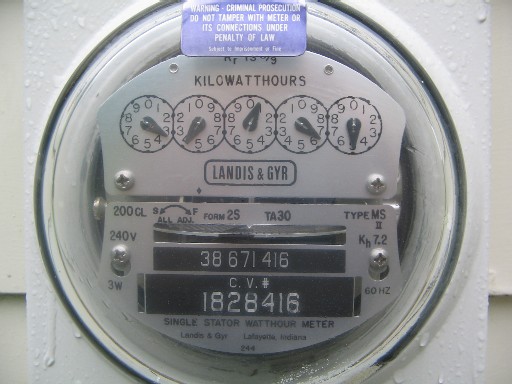
Inside an Ontario manufacturer’s energy storage project
by enel-X

By shifting electric load to a battery storage system during peak demand periods, the facility reduces its annual GA rates and its energy costs by 20%

PHOTO: Electric Meter/Jc3s5h via Wikimedia Commons
Near the entrance to Amhil North America’s plastics manufacturing plant in Mississauga, Ont., sits a new piece of equipment that may be hard for visitors to overlook – a large system of lithium-ion batteries.
“When we get customers visiting us, seeing that facility sitting on our front parking area, there’s a reason why it’s an open fence,” Mark Johnston, vice president of Manufacturing, Amhil North America. “I mean, we want to be able to show it. It’s impressive.”
For the plastics manufacturer, the 2.34-megawatt (MW) energy storage system not only helps the company take control of its biggest energy cost drivers, but also enables the facility to help alleviate some of the biggest challenges plaguing Ontario’s electric grid.
For the plant, as for all large commercial and industrial energy consumers in Ontario, the biggest driver of electricity costs is the Global Adjustment (GA) charge on the electricity bill. Today, the GA charge represents about 70% of electricity costs for most large energy consumers, and often exceeds that level. To take control of those costs, large commercial and industrial energy consumers participate in a program called the Industrial Conservation Initiative (ICI), which is available to all facilities with an average peak electricity demand of 1 MW and higher, and those in select industries with a peak demand of 500 kW or higher. Through the ICI, GA charges are calculated based on the facility’s electricity demand during the five highest one-hour periods of electricity demand across the entire Ontario electric grid.
The battery storage system provides a valuable resource to manage exposure to GA costs. By shifting electric load to the battery storage system during the five periods when the grid is most likely to reach peak demand, the facility can reduce its GA rate for the entire next year. With control software that utilizes machine learning and optimization techniques, the battery will automatically charge at times when electricity is least expensive and discharge at times when consuming from the grid is most expensive.
In addition to the direct financial impact on the plant’s balance sheet – the company expects to reduce energy costs by 20% as a result of the project – these practices also provide valuable relief to the grid. As more large energy users reduce their reliance on the grid during periods of peak demand for electricity, the total amount of electricity needed to supply peak demand shrinks. This improves grid reliability and reduces the need for costly, fossil fuel-dependent infrastructure just to meet peak demand levels for a few brief periods every year.
“We think it’s going to improve things for the overall grid network and for our neighbors around and with us,” says Steve Renwick, Co-Plant Manager, Amhil North America. “That has a benefit everywhere. Less maintenance, less cost means that will be passed onto the consumer.”
To learn more about the impact of energy storage in Ontario, download the whitepaper Understanding Ontario’s Energy Storage Opportunity.
To see how much money your organization could save with an energy storage system, try Enel X North America’s Ontario Energy Storage Calculator.
___
Enel-X is a provider of demand response electricity, serving a capacity of 6GW across 8,000 customers worldwide, and a leading provider of energy management advisory and technology services and solutions for commercial, institutional, and industrial customers, as well as electric power grid operators and utilities.